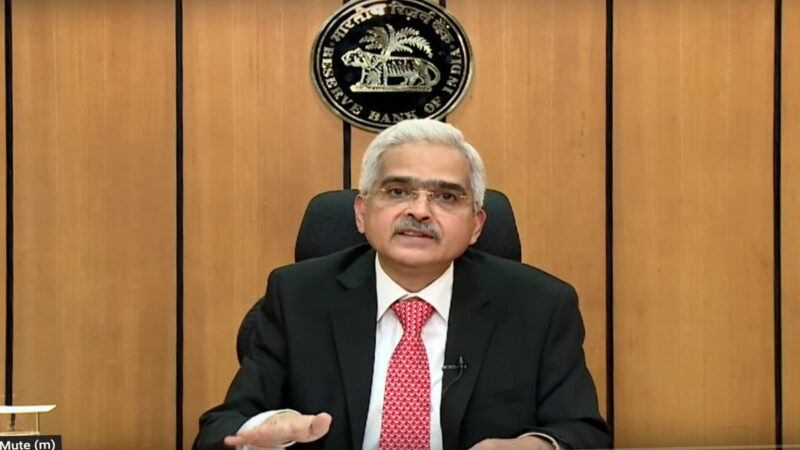
Mumbai, July 22: Amid rupee consistently falling against the US dollar, Reserve Bank of India (RBI) Governor Shaktikanta Das on Friday said that the Indian rupee has been holding up well relative to both advanced and EME (emerging market economies) peers.
Das said that spillovers from the global monetary policy tightening, geo-political situations, elevated commodity prices especially prices of crude and the lingering effects of the pandemic all coming together have become overwhelming for countries world over.
#RBI Governor @DasShaktikanta says that the Indian rupee is holding up well relative to both Advanced and Emerging Market Economies. This is because our underlying fundamentals are strong, resilient and intact. pic.twitter.com/nu4wLeTvCr
— All India Radio News (@airnewsalerts) July 22, 2022
“Even reserve currencies such as the Japanese Yen, the Euro and the British Pound Sterling have not been spared.
“Portfolio funds are selling off assets and fleeing to safe haven.
“Emerging market economies are particularly affected by capital outflows, currency depreciation and reserve drawdowns complicating macroeconomic management in these countries,” he said.
The Indian rupee this week breached the psychological level of 80 against the dollar. While it subsequently strengthened a bit but market watchers see the rupee touching 82 against the greenback in coming months.
Depreciation in rupee is set to make imports expensive and add to the inflationary pressure.
Das, however, said that the negative spillover effect on account of various global factors has been relatively modest on India.
“This is because our underlying fundamentals are strong, resilient and intact. The recovery is gradually strengthening. The current account deficit (CAD) is modest, inflation is stabilising, the financial sector is well-capitalised and sound.
“The external debt to GDP ratio is declining. The forex reserves are adequate,” he noted while speaking at an event organised by the Bank of Baroda.
The RBI Governor said that the central bank has been supplying US dollars to the market to ensure that there is adequate forex liquidity.
“After all, this is the very purpose for which we had accumulated reserves when the capital inflows were strong,” he said adding that one buys an umbrella to use it when it rains.
Das said that a predominant part of the outstanding ECBs (external commercial borrowings) is effectively hedged. Elaborating on the overall scenario, he said that out of the outstanding ECBs of $180 billion, 44 per cent or $79 billion is unhedged.
“This includes about US$ 40 billion liabilities of public sector companies – mainly in the petroleum, railways and power sectors – which have assets with a natural hedge character. Besides, being public sector entities, their foreign exchange risk, if any, can be absorbed by the government. Such a contingency is unlikely to arise,” he said.
Das further stated that the remaining US$ 39 billion ECB represents 22 per cent of the total ECBs outstanding.
“Even this includes borrowings of those companies which have a natural hedge, i.e. earnings in foreign currencies. This would leave a very small portion of the total outstanding ECBs that are truly unhedged,” the Governor said.
With Agency Inputs…






